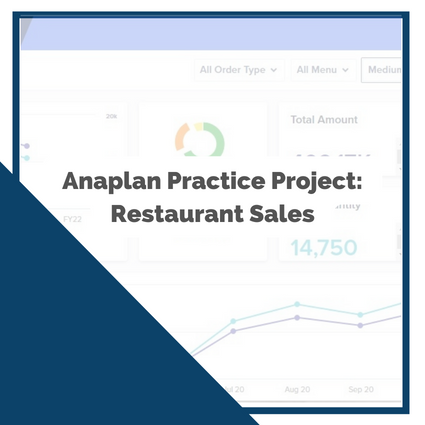Design Compensation Plans that Achieve Your Goal
Compensation plan building rarely gets the attention it deserves as an integral component of the holistic sales and sales operations landscape. Critically important, well-designed compensation plans reward reps appropriately for correct sales behaviors, can align sales efforts with corporate objectives and go-to-market strategies, and optimize the use of an organization’s budget for incentivizing the field.
Unfortunately, a variety of factors can create challenges in getting an effective set of plans up and running with the option for continual improvement. A cumbersome, challenging set of tools and processes for annual planning makes analysis and iteration on plan design highly time-consuming and tedious work when it comes to reprogramming this effort into compensation tools for the year ahead. This leads many companies to simply accept the status quo with little or no variation year over year.
The negative impact of these circumstances includes:
-
Misallocated use of compensation; suboptimal spending on renewals or existing clients, not enough reward for new lands
-
Unrealistic comp plans with poorly set goals relative to the territory inherited by the rep
-
Too few reps making goal; inverted bell curve attainment where top reps blow quota out of the water, creating excessive acceleration
-
Lack of alignment between incentives and annual goals caused by an inability to measure progress
I have witnessed several dozen organizations having to release new compensation plans as part of their re-platforming efforts in my time as an SPM architect serving Fortune 500 organizations. There are several best practices to keep your SPM program ahead of the curve and capable of deploying effective comp plans efficiently and in alignment with your corporate objectives.
Think About Your Territories
![]()
All compensation plan building starts with the territory the rep inherits. The accounts that comprise the territory must reflect a potential for spending that is reflected in the goal set for this territory. How often do reps all receive a similar or the same goal? In my experience, too often. However, not all territories are made the same. Two reps in the SF Bay area can have a very different potential propensity to spend within their territories but will still be assigned the same number.
The most important way to make sure comp plans work is to create a strong connection between the territory the rep receives and the goal they are provided. If reps are to receive the same goal, the set of accounts they service should have the same potential spend within the firm. Spending time to realign territories in order to balance and create equitable opportunity is vital before we even consider changing the compensation plans.
Analyze and Reflect; Consider What Is Important
Most organizations I have worked with, if not all, want to spend time considering how to deploy new compensation plans that will work, but rarely do they effectively analyze what didn’t work in the past. Based on my experience, I propose that considering the answers to the following questions about your current plans can serve as an essential springboard for any changes that you make to your current plans:
- What was variable compensation spent relative to total revenues? If it is X% or greater, it can only be justified if you experienced several new logo acquisitions and new customers acquired. If it was Y% or lower, is too much business being farmed, or are goals too high for reps to make a living?
- What is rep turnover? Who is leaving and who isn’t?
- Did you break your overall company goal into different numbers? Geo-based? Product family based? Which goals were achieved? Which were not?
- Can you easily band the performance of your sales rep population?
- Can you determine which reps use discounting in order to make a goal(It’s possible to overpay reps that have high attainment but lower organization margin.)
These are just a few of many questions that come to mind.
When it’s possible to answer these types of questions, you’ll gain insights into how to avoid these pitfalls in the upcoming year and how to design plans that will best meet your needs.
For example, a rep that hits the goal but uses extensive discounting could be exhibiting good behavior if the goal is to acquire new logos at a relatively young tech company. However, this behavior can be detrimental if the rep is farming these opportunities at an established manufacturing firm.
In short, it is essential to examine the past to determine the behaviors that don’t make sense in addition to performing those that do. These learnings should enhance the list of imperatives you bring into your forward-looking aspirations pertaining to comp.
KPIs and Plan Modeling Workspace

Being able to define a ‘new’ customer vs an ‘existing’ customer or classifying a bundled sale into its appropriate product family piece by piece can limit more ambitious comp desires.
Can you track discounts, total spending at the account to date, or other metrics which would let us consider acceleration or deceleration for the rep if we knew these factors?
Creating a data dictionary with robust and relevant compensation terminology and being able to develop rules to define data in this manner can be done more easily than ever before. Modern technology platforms can lift this effort out of a SQL database and into tools that empower the business to maintain and refine these terms easily.
These same platforms can execute the task of reprogramming compensation plan design, applying a new set of rules and measurements, and ‘what iffing’ a redesigned plan against your actual plan in weeks instead of months of man hours associated with traditional SPM tools.
Conclusion
If you strive for better compensation plans, the effort most often starts with the following:
- Ensuring equitable, achievable goals are reflected in the account potential that’s evenly distributed across territories
- Analyzing your results from last year by asking the right questions
- Being able to turn your desired outcomes into the right actionable KPIs and data in an environment where you can quickly, powerfully, and iteratively model and plan your designs and deploy them quickly.
If you can accomplish these things, your compensation plans will be more effective, and your sales rep productivity will align with corporate objectives more seamlessly.
To learn more about compensation planning and modeling, review our preferred software partner, Anaplan's Compensation modeling page.
At Voiant, we’ve helped customers not only deploy SPM solutions, but we can also perform a diagnostic on your existing compensation program and help you repurpose your comp plans to be viewed strategically. We can model and showcase potential changes to improve your plans, show you how to optimize a territory design for an entire geography, and turn goal setting into a more valuable exercise that takes weeks, not months! We can even show you how to quickly deploy contests so your compensation systems can keep pace with rapidly changing needs in the field
Feel free to reach out to us at info@voiantgroup.com if you would like to learn more.






.png?width=352&name=Compensation%20Plan%20Building%20(6).png)